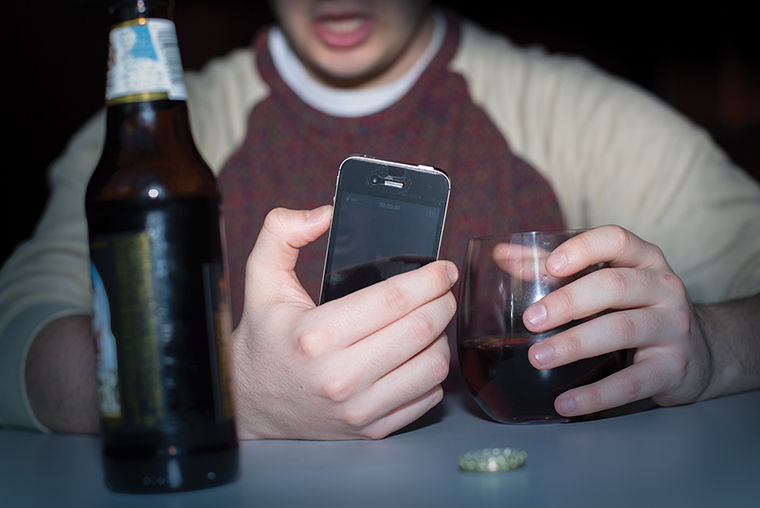YouTube videos portray binge drinking as humor, not reality
YouTube videos portray binge drinking as humor, not reality
March 9, 2015
In the millennial era, many are not surprised that portrayals of youth in the media tend to include the element of excessive alcohol consumption when the Centers for Disease Control and Prevention reports that nearly one in four people between the ages of 12—20 admit to binge-drinking regularly.
The findings of a new study published in the journal Alcoholism: Clinical and Experimental Research—which analyzed the 70 most popular YouTube videos that portray alcohol intoxication—may generate even more cause for concern than the scripted drunkenness viewers consume on television and the big screen.
Researchers found that these videos, which are viewed as entertainment and rack up millions of hits, commonly pair alcohol intoxication with humor and attractive people and scenarios, but rarely depict the negative clinical outcomes known to be associated with excess drinking.
“We weren’t really sure about what we expected to find because analyses like these have not been done in the past,” said Dr. Brian Primack, lead author of the paper and associate professor of medicine, pediatrics and clinical and translational science at the University of Pittsburgh. “There certainly have been analyses of other media—TV, movies and advertisements related to alcohol—and quite a lot of literature that shows messages related in those types of media can be very influential to young people.”
Primack said the team used five search terms: drunk, buzzed, hammered, tipsy and trashed to seek out videos that users had uploaded that would include footage of alcohol intoxication. Videos were then sorted by popularity and relevance.
“We expected that seeing a lot of positive associations with alcohol might be the case, but we also thought maybe we would find a lot of anti-alcohol messaging,” Primack said. “We broadly wanted to see what is out there in this area, and I guess we were surprised because it was a little more one-sided than we expected.”
E. Cordelia Miller Muhammad, a staff therapist at Columbia, said she hopes young people would think critically about how excessive drinking can lead to more terrible consequences than those they might see in videos online.
“I think with excessive drinking, people underestimate medically how problematic it can be,” Miller Muhammad said. “From alcohol poisoning to just really making some decisions that can lead to death, being drunk can lead to more terrible and severe consequences rather than humorous.”
One unexpected finding was that 44 percent of the videos included references to brand names of alcohol but were not expressly advertisements for those companies.
Although the researchers do not suspect the brand name-dropping was covert promotion for the companies, Primack said there is a very thin line when it comes to branding and advertising.
“We did look specifically to see if some were specific advertisers put on by for-profit alcohol companies, and as far as we could tell, they were not,” Primack said. “Branding is an important [factor] for young people on the way to alcohol-abuse behaviors. In other words, we constantly find that kids familiar with brands are often the ones to progress in a problematic way in their future. It’s just something we need to be think about and be aware of.”
Understanding the power that video-based social media outlets like YouTube have over young people is an opportunity to educate young adults about media literacy and could help open a conversation about how to analyze and evaluate behaviors like binge drinking rather than strictly reprimanding people for participating in them, Primack said.
Corbin Merriman, a junior business & entrepreneurship major, said he personally has not seen a single positive video when it comes to drinking.
“Usually the ones I see on Tosh.O are videos where someone is doing something really stupid,” Merriman said. “Personally, I would never put a video of me drinking on YouTube, mainly for job security. If an employer sees me and I get judged by that, it’s not going to be on my hands and I’m not going to be to thrilled by that.”
One way to mitigate this might be to include a mandatory disclaimer any time risky behaviors are depicted online, Miller Muhammad said.
“If you go to the casino to gamble, there’s a disclaimer about how it can be problematic,” Miller Muhammad said. “There should be something to give people the thought—or introduce the thought—that there could be people that are really having a problem with this. Or if you have a drinking problem go to this website, or do a screening.”
Primack said part of the difficulty is that researchers have to tell the whole truth when attempting to educate the public about health related issues.
“By definition, we are behind the eight ball,” he said. “Other industries can use techniques to associate alcohol use with humor, sexuality and with being social and all kinds of things that are positive. Use music, color, lighting and symbolism to push all these things, but we, as educators, can’t sit back and imply things that aren’t true. [Viewers have to] see them for what they are: attempts at manipulation that are really not concerned about the welfare of these customers.”
Merriman said the YouTube videos are good cautionary tales to warn young adults of behaviors to avoid instead of watching the videos and attempting to mimic their adolescent behavior.








